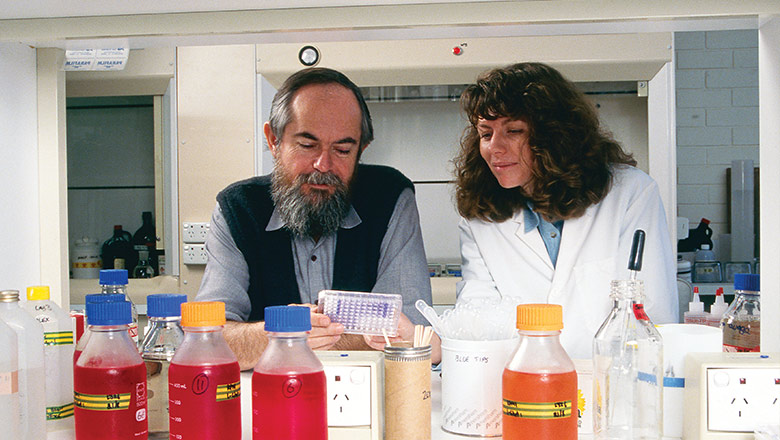Search
Research
Airway and parenchymal transcriptomics in a novel model of asthma and COPD overlapAsthma and chronic obstructive pulmonary disease (COPD) are common chronic respiratory diseases, and some patients have overlapping disease features, termed asthma-COPD overlap. Patients characterized with ACO have increased disease severity; however, the mechanisms driving this have not been widely studied.
Research
Longitudinal effects of prenatal exposure to plastic-derived chemicals and their metabolites on asthma and lung function from childhood into adulthoodEnvironmental exposure to phthalates and bisphenol A (BPA), chemicals used in the production of plastics, may increase risk for asthma and allergies. However, little is known about the long-term effects of early life exposure to these compounds.
Research
Rhinovirus-induced asthma exacerbations and risk populationsAsthma exacerbations are heterogeneous conditions that involve the complex interplay between environmental exposures and innate and adaptive immune function
Research
Prenatal adverse life events increase the risk for atopic diseases in children, which is enhanced in the absence of a maternal atopic predispositionThere is evidence to suggest an association between prenatal maternal stress and the development of asthma or other atopic diseases in offspring.
Research
Prophylactic use of sublingual allergen immunotherapy in high-risk children: A pilot studyThese findings suggest that this modified version of SLIT should be considered for retesting of mucosal-based immunotherapy for atopic asthma prevention.
Research
IRF7-Associated Immunophenotypes Have Dichotomous Responses to Virus/Allergen Coexposure and OM-85-Induced ReprogrammingHigh risk for virus-induced asthma exacerbations in children is associated with an IRF7lo immunophenotype, but the underlying mechanisms are unclear. Here, we applied a Systems Biology approach to an animal model comprising rat strains manifesting high versus low susceptibility to experimental asthma, induced by virus/allergen coexposure, to elucidate the mechanism(s)-of-action of the high-risk asthma immunophenotype.

News & Events
The Kids Research Institute Australia researchers share in TPCHRF fundingEight The Kids Research Institute Australia researchers are among those who have received grant funding from the Telethon-Perth Children’s Hospital Research Fund (TPCHRF).

News & Events
NHMRC funding awarded to support child health researchThe Kids Research Institute Australia researchers have been awarded more than $10 million in research funding from the National Health and Medical Research Council (NHMRC).

News & Events
Switch on the immune system earlyFindings by Professor Pat Holt revealed researchers had been heading down the wrong path in their battle strategy against respiratory allergy and asthma.

News & Events
Overseas trip will help unlock the asthma puzzleOne in ten Australians have asthma and Dr Kimberley Wang from The Kids Research Institute Australia is on a mission to find out what causes it.
